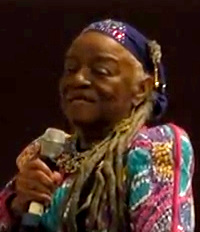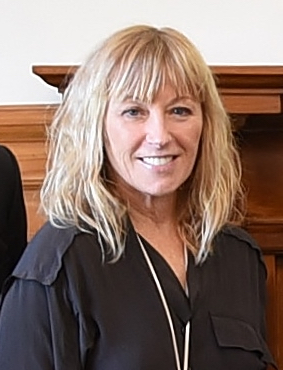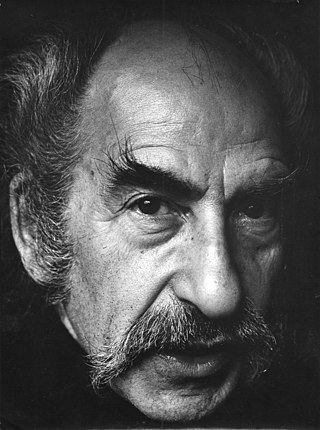
Nam June Paik was a Korean artist. He worked with a variety of media and is considered to be the founder of video art. He is credited with the first use (1974) of the term "electronic super highway" to describe the future of telecommunications.

Kathleen Hanna is an American singer, musician and pioneer of the feminist punk riot grrrl movement, and punk zine writer. In the early-to-mid-1990s she was the lead singer of feminist punk band Bikini Kill, and then fronted Le Tigre in the late 1990s and early 2000s. Since 2010, she has recorded as the Julie Ruin.

David Michael Wojnarowicz was an American painter, photographer, writer, filmmaker, performance artist, songwriter/recording artist, and AIDS activist prominent in the East Village art scene. He incorporated personal narratives influenced by his struggle with AIDS as well as his political activism in his art until his death from the disease in 1992.

The PXL2000 or Pixelvision, was a toy black and white video camera, introduced by Fisher-Price in 1987 at the International Toy Fair in Manhattan, which could record sound and images onto inexpensive Walkman-style compact audio cassette. It was on the market for one year with about 400,000 units produced. After that one year, it was pulled by the market, but rediscovered in the 1990s by low-budget filmmakers who appreciated the grainy, shimmering, monochrome produced by the unit, and the way in which its lens allowed the user to photograph a subject an eighth of an inch away from the camera, and pull back to a long shot without manipulating a dial, while keeping as the background and the foreground in focus. It is also appreciated by collectors, artists, and media historians, and has been used in major films and spawned dedicated film festivals.
Ana Mendieta was a Cuban-American performance artist, sculptor, painter, and video artist who is best known for her "earth-body" artwork. She is considered one of the most influential Cuban-American artists of the post–World War II era. Born in Havana, Cuba, Mendieta left for the United States in 1961.

Johanna Rachel Fateman is an American writer, songwriter, musician, and record producer. She is a member of the post-punk rock band Le Tigre and founded the band MEN with Le Tigre bandmate JD Samson.

Faith Ringgold is an American painter, painting on different materials including fabric, a published author, mixed media sculptor, performance artist, and intersectional activist, perhaps best known for her narrative quilts.

Eleanor Antin is an American performance artist, film-maker, installation artist, conceptual artist, feminist artist, and university professor.

Jocelyn Samson, known professionally as JD Samson, is an American musician, producer, songwriter and DJ best known as a member of the bands Le Tigre and MEN.

Cynthia Morris Sherman is an American artist whose work consists primarily of photographic self-portraits, depicting herself in many different contexts and as various imagined characters.

Shigeko Kubota was a Japanese video artist, sculptor and avant-garde performance artist, who mostly lived in New York City. She was one of the first artists to adopt the portable video camera Sony Portapak in 1970, likening it to a "new paintbrush." Kubota is known for constructing sculptural installations with a strong DIY aesthetic, which include sculptures with embedded monitors playing her original videos. She was a key member and influence on Fluxus, the international group of avant-garde artists centered on George Maciunas, having been involved with the group since witnessing John Cage perform in Tokyo in 1962 and subsequently moving to New York in 1964. She was closely associated with George Brecht, Jackson Mac Low, John Cage, Joe Jones, Nam June Paik, and Ay-O, among other members of Fluxus. Kubota was deemed "Vice Chairman" of the Fluxus Organization by Maciunas.

Minnie Eva Evans was an African American artist who worked in the United States from the 1940s to the 1980s. Evans used different types of media in her work such as oils and graphite, but started with using wax and crayon. She was inspired to start drawing due to visions and dreams that she had all throughout her life, starting when she was a young girl. She is known as a southern folk artist and outsider artist as well as a surrealist and visionary artist.
K8 Hardy is an American artist and filmmaker. Hardy's work spans painting, sculpture, video, and photography and her work has been exhibited internationally at the Whitney Museum of American Art, Tate Modern, Tensta Konsthalle, Karma International, and the Dallas Contemporary. Hardy's work is included in the permanent collections of the Whitney Museum of American Art, the Solomon R. Guggenheim Museum, and the Museum of Modern Art. She is a founding member of the queer feminist artist collective and journal LTTR. She lives and works in New York, New York.
Girl Power is a queer feminist video made in 1992 by Sadie Benning with a Fisher-Price PixelVision camera. The video, which runs for 15 minutes, is considered at once a reflection on Benning's unhappy childhood and a celebration of her sexuality and the Riot grrrl subculture. The video was featured in "Pixel This Vision", a project organized by The Balagan Experimental Film & Video Series to "put together a program of the best of PixelVision"
Me and Rubyfruit is a short 1989/1990 videorecording by American artist Sadie Benning that runs for 5 minutes and was recorded with PixelVision camera in black and white. The title alludes to Rubyfruit Jungle, a 1973 novel by Rita Mae Brown that has explicitly lesbian themes.

Nicole Eisenman is a French-born American artist known for her oil paintings and sculptures. She has been awarded the Guggenheim Fellowship (1996), the Carnegie Prize (2013), and has thrice been included in the Whitney Biennial. On September 29, 2015, she won a MacArthur Fellowship award for "restoring the representation of the human form a cultural significance that had waned during the ascendancy of abstraction in the 20th century."
Wu Tsang is a filmmaker, artist and performer based in New York and Berlin, whose work is concerned with hidden histories, marginalized narratives, and the act of performing itself. In 2018, Tsang received a MacArthur "genius" grant.
Eunice Golden is an American feminist painter from New York City, known for exploring sexuality using the male nude. Her work has been shown at the Whitney Museum of American Art, Brooklyn Museum, Bronx Museum of the Arts, Westbeth Gallery, and SOHO20 Gallery.
Single-channel video is a video art work using a single electronic source, presented and exhibited from one playback device. Electronic sources can be any format of video tape, DVDs or computer-generated moving images utilizing the applicable playback device and exhibited using a television monitor, projection or other screen-based device. Historically, video art was limited to unedited video tape footage displayed on a television monitor in a gallery and was conceptually contrasted with both broadcast television and film projections in theatres. As technology advanced, the ability to edit and display video art provided more variations and multi-channel video works became possible as did multi-channel and multi-layered video installations. However, single-channel video works continue to be produced for a variety of aesthetic and conceptual reasons and the term usually now refers to a single image on a monitor or projection, regardless of image source or production.

Symeon Shimin was a Russian born American artist and illustrator of Russian Jewish descent. He was principally known as an artist of Hollywood Film Posters and as an award-winning illustrator of 57 children's books including two that he authored himself, I wish there were two of me and A special birthday. His fine art, developed throughout his life, includes the highly acclaimed mural Contemporary Justice and The Child created in 1936, that took four years to complete. Other notable work includes the painting The Pack that he completed in 1959.













